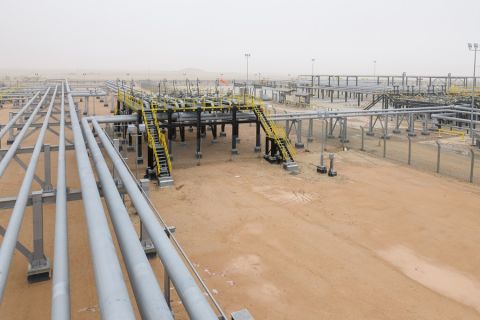Construction is scheduled to start next year on a fourth U.S. liquefied natural gas (LNG) export terminal. The Department of Energy (DOE) has approved shipments to non-free trade agreement (FTA) customers from Dominion Resources’ Dominion Cove LNG import facility on Chesapeake Bay in Lusby, Maryland. More than 20 proposed LNG facilities must go through the rigorous permitting process.
The DOE previously approved Dominion’s application to export to countries with FTAs but the latest nod of approval opens sales to non-FTA countries such as those in Europe and Asia where the price of gas is high.
The plant, which will cost up to $3.8 billion, is scheduled with an in-service date of 2017. The company has subscribed its full capacity of up to 770 million cubic feet of gas per day to two companies. Pacific Summit Energy LLC, a U.S. affiliate of Japanese trading company Sumitomo Corp., and GAIL Global (USA) LNG LLC, a U.S. affiliate of GAIL (India) Ltd., have signed 20-year service agreements with Dominion.
The pathway for free LNG exports was paved by Cheniere Energy Partners LP, which had the first LNG export facility, Sabine Pass Liquefaction, approved in 2010. Construction for the Cameron Parish, Louisiana, complex began last year, with operations expected to start in 2015.
Cheniere is also signing 20-year service contracts for its LNG exports. The company is not stopping with one LNG plant approval, though. It has been active in getting a second terminal approved in Corpus Christi, Texas. It filed the FERC application in August 2012 and is hoping to gain approval and start construction in 2015.
Next to receive approval was Freeport LNG, which can export 511 billion cubic feet of liquefied gas per year. All export capacity for the facility has been fully leased.
Another LNG project, Lake Charles Exports LLC, was approved last August. The facility is a jointly owned subsidiary of BG Group and Southern Union Co., a joint venture owned by Energy Transfer Equity LP and Energy Transfer Partners LP. The scope of the project includes construction of three liquefaction trains with a total capacity of 15 million metric tonnes of LNG per year. Construction is expected to start in mid-2015.
Recommended Reading
FERC Again Approves TC Energy Pipeline Expansion in Northwest US
2024-04-19 - The Federal Energy Regulatory Commission shot down opposition by environmental groups and states to stay TC Energy’s $75 million project.
Eversource to Sell Sunrise Wind Stake to Ørsted
2024-04-19 - Eversource Energy said it will provide service to Ørsted and remain contracted to lead the onshore construction of Sunrise following the closing of the transaction.
Shipping Industry Urges UN to Protect Vessels After Iran Seizure
2024-04-19 - Merchant ships and seafarers are increasingly in peril at sea as attacks escalate in the Middle East.
Paisie: Crude Prices Rising Faster Than Expected
2024-04-19 - Supply cuts by OPEC+, tensions in Ukraine and Gaza drive the increases.
Brett: Oil M&A Outlook is Strong, Even With Bifurcation in Valuations
2024-04-18 - Valuations across major basins are experiencing a very divergent bifurcation as value rushes back toward high-quality undeveloped properties.




